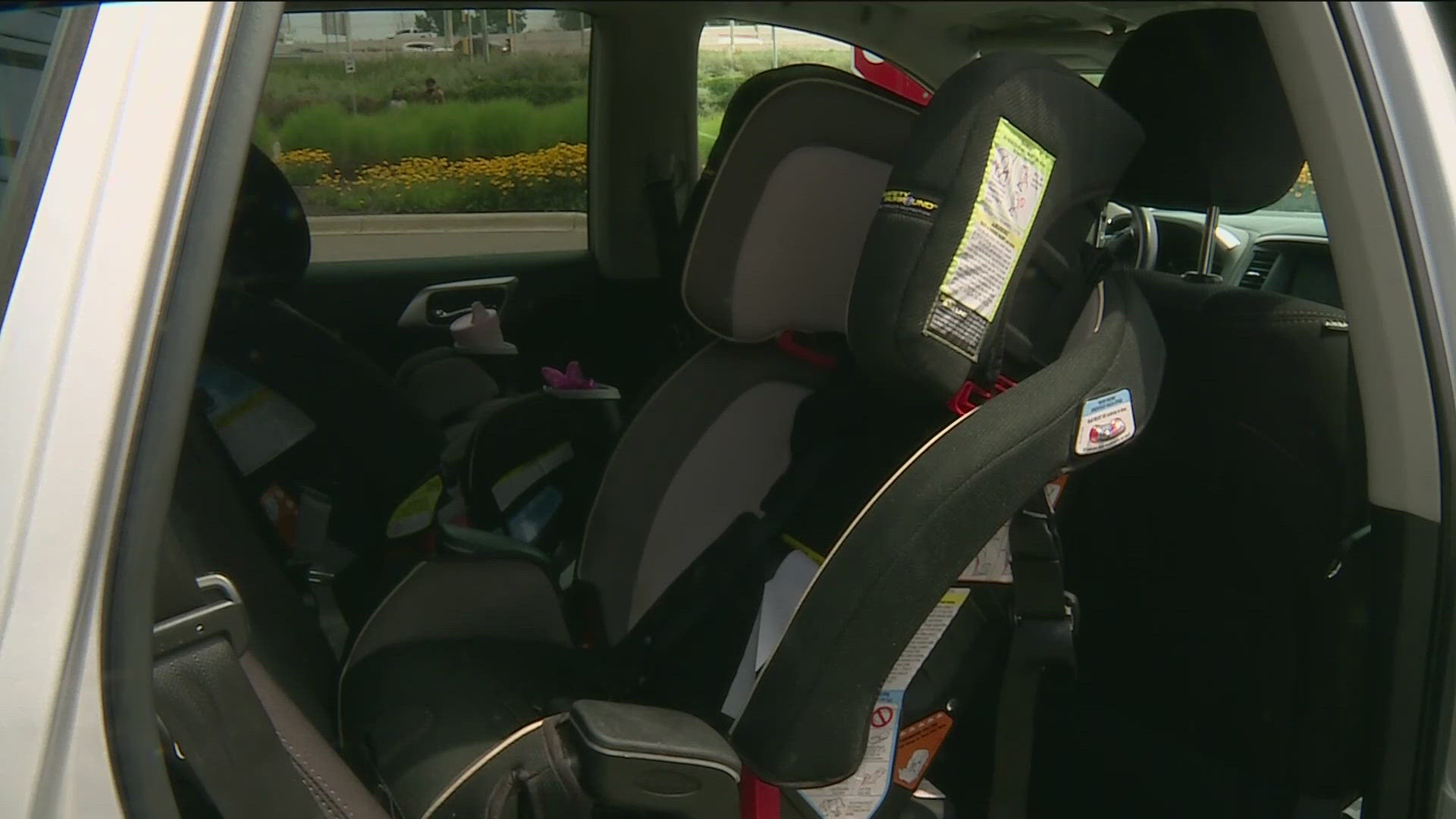ST PAUL, Minn — On August 1st, the Minnesota Child Passenger Safety Law goes into effect, bringing new guidance on child car seats, booster seats and seat belts for kiddos.
Before these changes, state law required car seats to be used according to the manufacturer's instructions on height and weight.
Now, the new laws specify ages for rear and forward-facing car seats, booster seats and seat belts. The new laws also increase the booster seat requirement from 8 to 9 years old.
The new child restraint laws will require:
- A child younger than age 2 is to be properly restrained in a rear-facing child passenger restraint system with an internal harness until the child reaches the weight or height limit of the child passenger restraint system.
- A child who is at least age 2 and exceeds the rear-facing weight or height limit of the child passenger restraint system is to be properly restrained in a forward-facing child passenger restraint system with an internal harness until the child reaches the weight or height limit of the child passenger restraint system.
- A child who is at least age 4 and exceeds the weight or height limit of the forward-facing child passenger restraint system is to be properly restrained in a booster seat and secured with a safety belt.
- A child who is at least age 9 or exceeds the weight or height limit of the child passenger restraint system or the booster seat is to be secured with a safety belt adjusted and fastened around the child's body to fit correctly.
- If a child falls into more than one category, then the child must be placed in a safer restraint for them. For example, a child who is 2.5 years old and weighs 35 pounds but has a car seat with a rear-facing limit of 40 pounds must stay rear-facing even though they are over 2 years old.
Additionally, the new guidelines said children under 13 years old must sit in the back seat if possible.
The Aug. 1st changes also state that every driver who has children under the age of 18 in a vehicle must have them in a child safety seat or restrained by a seat belt.
Shonette Micco is the injury prevention program supervisor at Regions Hospital.
She says car seat laws are often confusing for parents, but the laws are important, because she and her colleagues have seen firsthand the lifesaving potential of a correctly installed car seat.
"Children are injured unintentionally at a very high rate in car crashes. As a level one pediatric trauma center we see this. It’s one of the top three causes of admission to our trauma center," Micco says.
The Minnesota Office of Traffic Safety has a detailed explanation of these new laws online.
The website also has a list of resources available for parents who want to check and make sure they are installing their car seats correctly.

